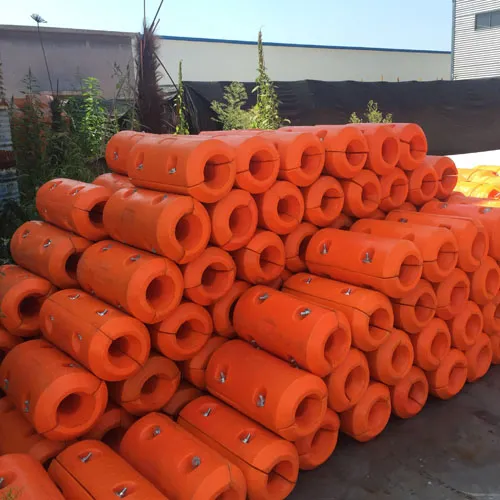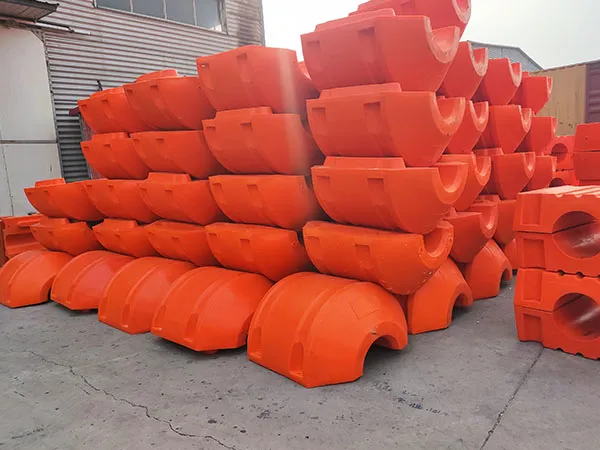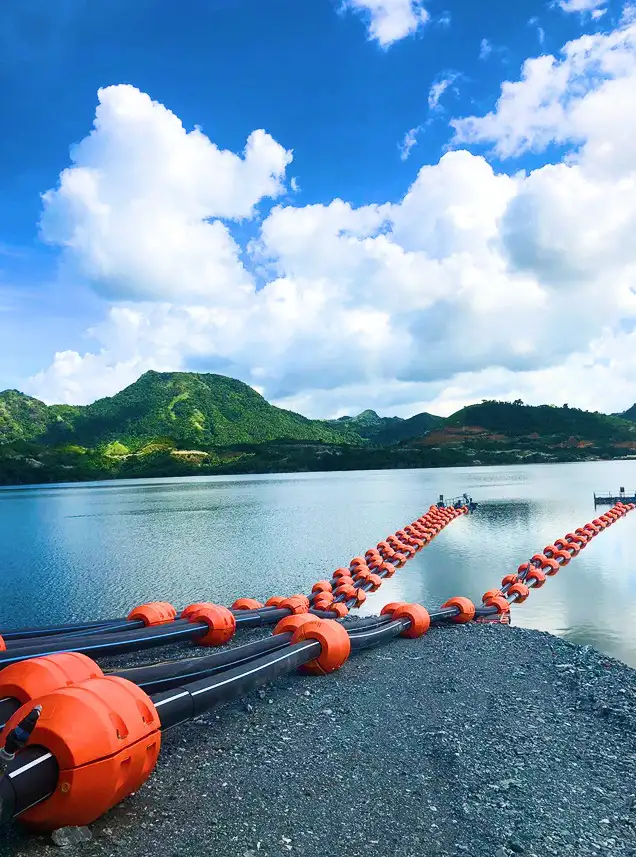Time: 2025-08-05 07:19:51 Source: Max Pipe
HDPE pipe floaters, also known as pipe floats or dredging floaters, are essential components in offshore operations like dredging, mining, and oil and gas transport. They provide buoyancy to pipelines, hoses, and cables, keeping them at or near the water's surface. The choice of HDPE as the material is a strategic engineering decision that offers significant advantages over traditional alternatives like steel.
HDPE (High-Density Polyethylene) pipe floaters offer numerous advantages in offshore engineering due to their unique properties.

HDPE pipe floaters are specifically designed to provide high buoyancy, keeping pipelines, hoses, and cables afloat on the water's surface or at a desired depth. This is crucial for various offshore operations like dredging, where pipelines transport sediments and materials. The flotation prevents the pipes from sinking, resting on the seabed, or being damaged by waves and currents, ensuring consistent flow and operational efficiency. They also provide stability, preventing excessive bending or stress on the pipeline, which can lead to structural damage.
Offshore environments are harsh, with constant exposure to saltwater, chemicals, UV radiation, and abrasive materials. HDPE is highly resistant to these elements. Unlike traditional steel or concrete floats, HDPE pipe floaters do not corrode, rust, or degrade in marine conditions. This exceptional resistance extends their lifespan significantly, often three times longer than steel pontoons, and reduces the need for frequent maintenance and replacement.
HDPE is a lightweight material, making these pipe floaters much easier to transport, handle, and install compared to heavier alternatives. This reduces logistics costs and saves considerable time and labor during offshore construction projects. Their design often allows for quick and straightforward assembly around the pipes using bolts or clamps, further streamlining the installation process.

HDPE pipe floaters are known for their high impact resistance and toughness. They can withstand the forces of waves, currents, and even potential collisions with vessels, protecting the underlying pipelines from damage. Many are filled with high-strength polyurethane foam, enhancing their impact absorption capabilities and ensuring long-term performance in dynamic marine settings.
While initial costs may vary, the long-term cost-effectiveness of HDPE pipe floaters is significant. Their extended lifespan, minimal maintenance requirements, and reduced transportation and installation costs contribute to lower overall project expenditures. Furthermore, HDPE is a recyclable material, making these floaters an environmentally friendly choice that aligns with sustainability goals in offshore engineering. They have a lower carbon footprint in production and can be reused multiple times, reducing the demand for new materials.
In summary, the use of HDPE pipe floaters in offshore engineering is a modern, strategic choice that moves beyond simply providing buoyancy. Their benefits in durability, lifecycle cost, ease of installation, impact resistance, and safety make them a superior solution that enhances project efficiency, reliability, and profitability in one of the world's most challenging work environments.
